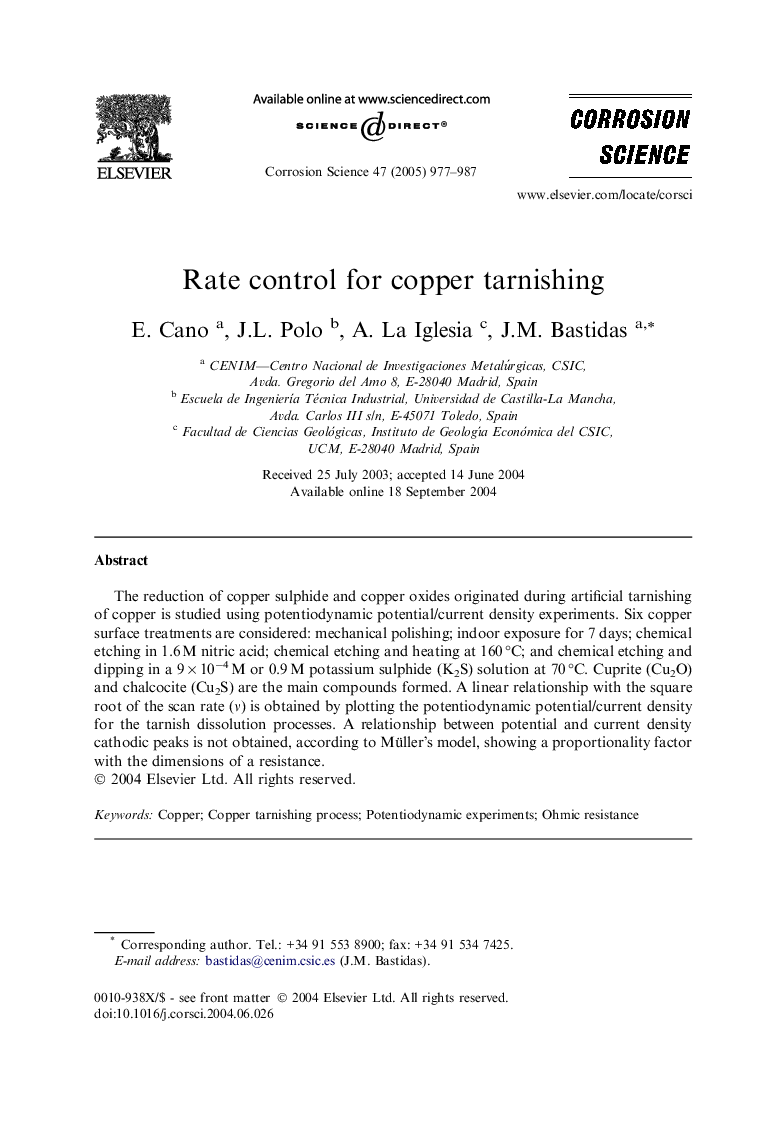| Article ID | Journal | Published Year | Pages | File Type |
|---|---|---|---|---|
| 10628517 | Corrosion Science | 2005 | 11 Pages |
Abstract
The reduction of copper sulphide and copper oxides originated during artificial tarnishing of copper is studied using potentiodynamic potential/current density experiments. Six copper surface treatments are considered: mechanical polishing; indoor exposure for 7 days; chemical etching in 1.6 M nitric acid; chemical etching and heating at 160 °C; and chemical etching and dipping in a 9 Ã 10â4 M or 0.9 M potassium sulphide (K2S) solution at 70 °C. Cuprite (Cu2O) and chalcocite (Cu2S) are the main compounds formed. A linear relationship with the square root of the scan rate (ν) is obtained by plotting the potentiodynamic potential/current density for the tarnish dissolution processes. A relationship between potential and current density cathodic peaks is not obtained, according to Müller's model, showing a proportionality factor with the dimensions of a resistance.
Keywords
Related Topics
Physical Sciences and Engineering
Materials Science
Ceramics and Composites
Authors
E. Cano, J.L. Polo, A. La Iglesia, J.M. Bastidas,
